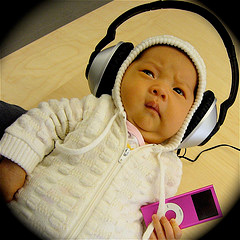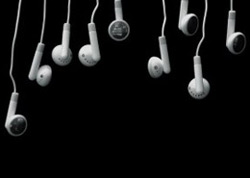 The idea behind noise cancelling earphones is to actively cancel out the noise from your surroundings. This is done by producing sound waves that cancel the environmental noise. The details of this are explained in more detail below.
The idea behind noise cancelling earphones is to actively cancel out the noise from your surroundings. This is done by producing sound waves that cancel the environmental noise. The details of this are explained in more detail below.
Noise cancelling technology involves four different components. First there is a power source to provide the energy to run the system. Typically this involves a battery or two. Second is a sound detector for assessing incoming noise. Third is a processor, which actually serves two purposes. It determines the frequency of incoming sound and sends out the signal for the sound that will cancel the noise. Fourth is the speaker that emits the noise cancelling frequency.
The idea for this form of noise cancellation was first patented in 1930 by Paul Lueg. This work acknowledged the fact that a noise and its mirror wave, exactly out of phase, could cancel each other out. In the 1980’s the US Airforce and Amar Bose perfected a headphone system of active sound cancellation that cancelled incoming noise within the ear canal in the 1980s. This advance lead to the modern day headphone and earbud applications we use today. Bose headphones with active noise cancelling are still offered for sale today, as are a number of other brands.
Bose QuietComfort 3 Noise Cancelling Headphones
JVC HANC250 High-Grade Noise Cancelling Headphones
Audio Technica ATH-ANC7B Active Noise-Cancelling Closed-Back Headphones
In theory noise cancelling technology is just as easily built into earbuds as it is into headphones. In reality it is a bit of challenge. Adding a battery fueled power source, a device to assess incoming sounds, a processor to determine the frequency of the sound cancelling waves that are needed and more sound reproduction transmitters to headphones is not problematic. Earbuds are another matter. They are not bulky and ideally should be unobtrusive and virtually unnoticeable.
Sound Waves and Noise Cancellation
 Sound is produced by waves moving through air. All waves have peaks and trough and with a steady sound the distance between each repeating part of the wave is defined by a set distance (the wavelength). So the distance from one trough to the next or from one peak to the next peak is the same distance away. The trick with effectively negating this wave is to produce the same sound but with one important feature related to its timing. The sound cancelling noise is exactly out of phase with the noise you want to eliminate. This means that when the two sound waves meet the trough of the original noise is being met by a peak of the sound cancelling wave. The end result is an entirely flattened sound profile.
Sound is produced by waves moving through air. All waves have peaks and trough and with a steady sound the distance between each repeating part of the wave is defined by a set distance (the wavelength). So the distance from one trough to the next or from one peak to the next peak is the same distance away. The trick with effectively negating this wave is to produce the same sound but with one important feature related to its timing. The sound cancelling noise is exactly out of phase with the noise you want to eliminate. This means that when the two sound waves meet the trough of the original noise is being met by a peak of the sound cancelling wave. The end result is an entirely flattened sound profile.
Baby with headphones photo courtesy creative commons license, http://www.flickr.com/photos/gideon/429590768/
